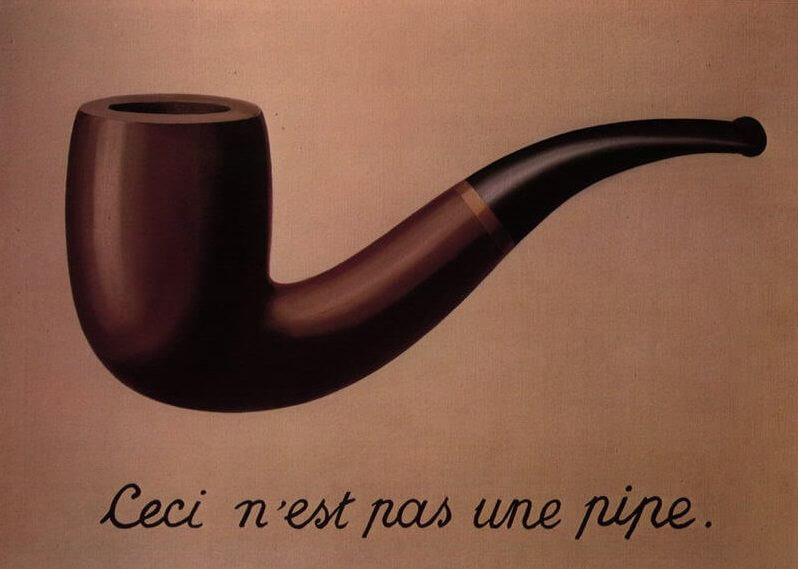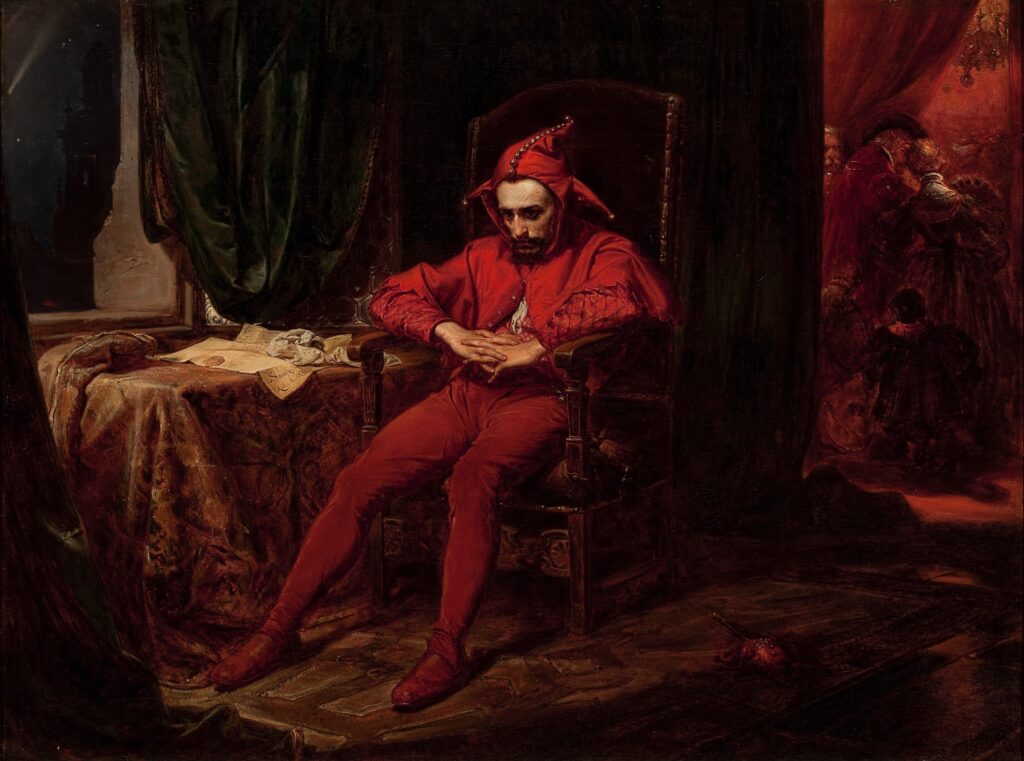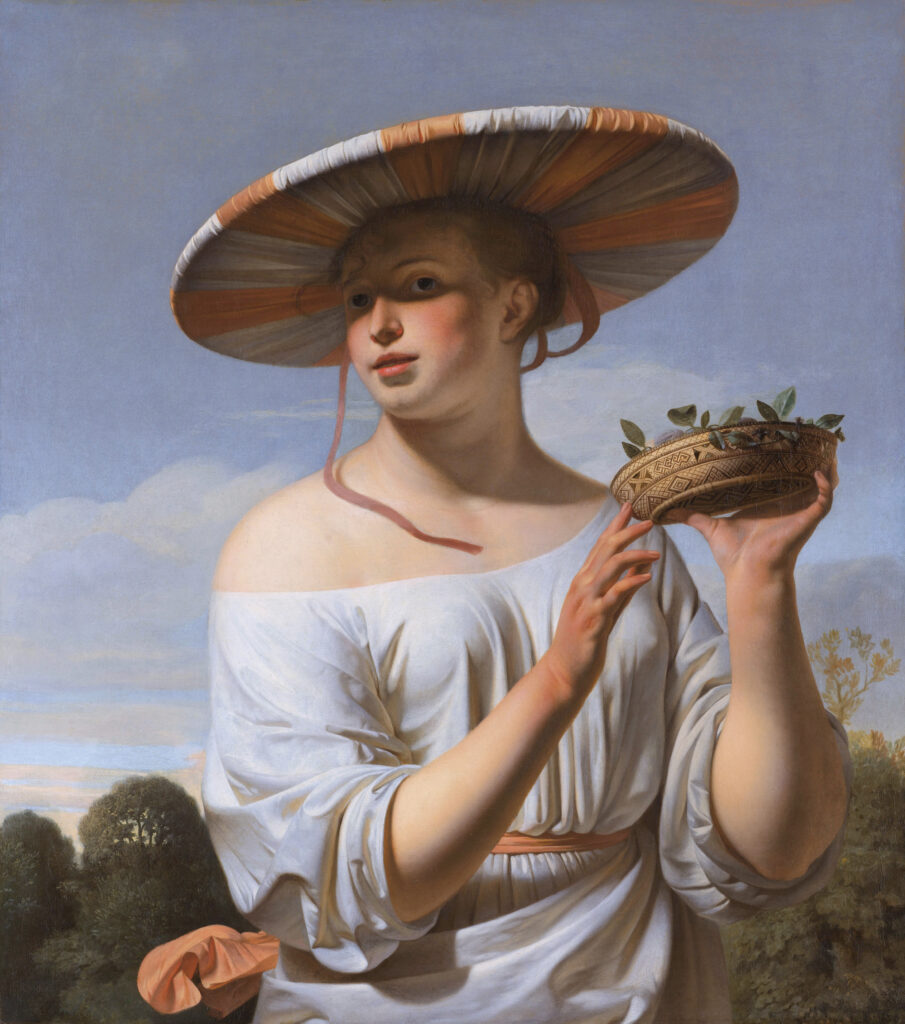Sometimes a sculptor’s day involves something else than aggressively pursuading a lump of clay or stone to take on unnatural shapes. Sometimes there’s mandatory computer work. Like when it turns out that you need a portfolio document ASAP. But staring at a computer screen for hours isn’t my favorite way of spending time (and yes I do see the irony of me – a former game designer – saying this). Even if it is to decide which pieces of my work are relevant to showcase.
So I caught myself procastinating by reading the biography of Monet, when the writer of the article in all seriousness claimed that Monet is an artist “with a relatively small body of work”. The man has left us at least 1000 paintings. In contrast: I was sifting through less than a dozen pictures, deciding if I should add them to the portfolio or not. Cue hysterical laughter.
To make myself feel better, I decided to make this list. Here are 10 of the least prolific artists in history:
10. René Magritte

Let me first reveal that the scientific method for compiling this list was ‘dilligently browsing the internet like a total pro, combined with personal know-how’.
Using these robust techniques, at number 10, I naturally arrived at René Margritte. The creator of that famous painting telling us that what we were looking at wasn’t in fact a smoking pipe.
Despite Magritte’s (1898, Belgium) fame today, the painter did not do so well in his lifetime . His first solo-exhibition in ‘27 was poorly reviewed. Depressed by the failure, he moved to Paris, where he became one of the leading members of the Surrealist movement. With the war breaking out, and the lean post-war period afterwards, Magritte supported himself through the production of forgeries. First only paintings (Picassos were among them). Later, he’d also expand to printing banknotes. Something I’m sure he’d be cancelled for today.
It was only in the 1960’s that public awareness for his witty and philosophical surrealistic work started to grow. Unfortunately, Magritte died of pancreatic cancer in 1967, leaving us 372 paintings.
9. Jackson Pollock
Famous for his drip technique, Pollock (1912, USA) is said to have created around 363 paintings. Nothing to sneeze at, considering Pollock’s life was cut short in a one-sided car accident in 1956.

Struggling with alcoholism for much of his adult life, friends and contemporaries would describe him as kindhearted and reflective when sober, but violent when drunk. Both aspects meet each other in a perfect balance in his work. His wife – Lee Krasner – was a much needed stabalizing force in the life of this abstract-expressionist painter.
7. Jan Matejko
When Matejko’s mother died, his upbringing fell to his eldest brother. It soon became clear that little Jan (1838, Poland) wasn’t the brightest tool in the shed. Having difficulty in school, none of the academic subjects clicked for him and his grades were abhorrent, but… He did showcase exceptional skill for painting! And so Matejko would enter the School of Fine Arts in Krákov, despite not mastering a foreign language. (which apparently the academy thought was important if you wanted to know how to apply paint on canvas or wood)

As a historical painter, Matejko’s work was deeply patriotic. In a time where Poland was partitioned and lacked political autonomy, he felt it necessary to promote polish history and identity. He’d even fully admit that his paintings weren’t completely historically accurate, explaining that their social function was much more important.
Some complained that Matejko’s painting style was outdated, bombastic, theatrical, and that his style was ‘antiquarian realism’. But well… Everyone’s a critic. Matejko died in 1983, having painted 239 large paintings.
6. Diego Velasquez

Born in 1599 Seville, one of the most stable and secure positions an artist in the time of Velasquez could held, was that of court painter. You’d have a monthly wage, get into contact with the mightiest and wealthiest people in the world, and you were allowed to have personal practice, to make money on the side. This usually involved doing portraits of the king’s guests.
It’s no wonder that a young Diego moved to Madrid, hoping to snatch one of these illusive positions of financial securities. It took him two tries. But with courtly intrigue, also comes competition. Velasquez had to work hard to make sure other artists dit not take his security away from him. And the more our court painter moved up the social food chains, the more his responsibilities would grow and the less time he’d have to paint. By the end of his career, Velasquez only rarely took out his paintbrush, which had been the main reason he had come to Madrid in the first place. He died in 1660, leaving 134 works.
5. Johannes Vermeer
Famous for his portrayals of timeless, everyday life, Vermeer (1632, The Netherlands), would not skimp on materials. Contrary to collegues for instance, he’d refuse to use anything else than ultramarine blue, which is made of lazurite, or lapis lazuli and one of the most expensive pigments in the world. The quality shows: The blues in his paintings are still as vibrant today as they were when he painted them, centuries ago. Unlike the muddy colors of contemporary paintings.
Being an art dealer and appraiser, his paintings were a secondary job. The main reason why his body of work is so small (only 38-50 paintings are estimated to have been created by him), is because his style was very time consuming. X-rays reveal that Vermeer often changed the entire composition of a painting for instance.

Vermeer is yet another artist who fits the cliché of a penniless painter a little too well. He died in 1675, likely due to stress-induced heart failure, when after a period of severe economic downturn, he’d been unable to sell any of his paintings and thus been unable to provide for his wife and 11 children.
4. Ron Mueck
Let’s look at someone who is still among us. The Australian sculptor Ron Mueck, born in 1958, might surprise us and decide to churn out dozens of sculptures every day for the next few decades. In that case, I’m going to have to rewrite this entire blog. But I doubt it. … I hope. Mueck’s work could be described as ‘extraordinary’. Extraordinary in its realism – you absolutely do feel like there’s a person staring back at you. But also extraordinary in how he plays with size scale. These same sculptures are far too large, or just a bit too smal.

Considering the fact that he is a hyperrealist, the size of his work, and how labor-intensive it is to create his sculptures, it’s no surprise that it took him 25 years to create ‘only’ 48 sculptures. I think he’s still working at incredible speed, all things considered.
3. Artemisia Gentileschi
You’d think that being a woman is the reason why Gentileschi (Italy, 1593-1656) is the reason why she’d have a modest body of work of 45. After all, members of the ‘fairer sex’ were not allowed to work during the 17th century correct? While somewhat true, things are a little less black and white, when it comes to Artemisia. For one, she was the first woman to be accepted into the Accedemia della Arti del Disegno in Florence. Secondly, she had a thriving international career, which involved many patrons and admirers, including Charles I of England.

It was her brutal baroque style, influenced by Carravaggio, that inspired people. Her main subjects would be women. As victims, as heroes, murderers etc. But the way she depicted them was unique. Up until then, women were painted in a dreamlike, subdued state. Not Artemisia’s women. Her paintings are raw, visceral, uneasy in their honesty. doesn’t matter what age we live in, people will recognize quality and talent.
2. Cesar Van Everdingen

Most of the names on this list are quite famous examples. Let’s turn to a talented, but lesser known classicist from the Dutch Golden Age. Van Everdingen (The Netherlands, 1616-1678), wasn’t the only artist in the family, although the work of his brother Allaert couldn’t be more different. Where Allaert would focus mostly on landscape paintings, Cesar would become quite popular in his lifetime for his history pieces and portraits. Although he is one of the lesser known fine art painters now, Van Everdingen’s use of color, and rendering of materials and textures is unsurpassed. If you take a closer look at the folds in the sleeves of the dress in Woman in a Large Hat, for instance, you can see pink paint, suggesting the skin color underneath being reflected in the shadow.
1. Hieronymus Bosch

And finally, at the end of the list, another Dutch painter. Although undoubtedly much more famous, it was a little hard to figure out how many paintings of Hieronymus Bosch (The Netherlands, 1450-1516) are actually his. that’s because this man was already famous in his own time. So much so, that – because his work was being collected – there were forgers copying his style in an attempt to cash in on Bosch’s fame.
Although mostly known for his grotesk paintings of hellscapes and devils, Hieronymus Bosch is being celebrated for introducing a new visual language to the art world. 25 paintings are attributed to him.
Quite a long list. And even though threehundred something is faaaaaar out of my reach, I’m quite sure I’m able to manage to create 25 sculptures. Especially with the help of some forgers. But what this list taught me the most is that we often look at how much people produce, when many fantastic sculptors or painters – some of them have been truly innovative – have only a small body of work. There’s more to growth than production alone. Hopefully I’ll still remember this the next time I pick up my sculpting tools.





